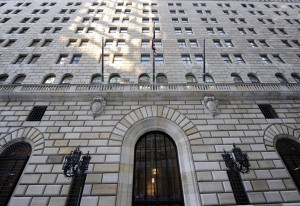The Federal Reserve Bank of New York today released its latest report on consumer credit, stating that credit continues to improve in the wake of the 2008 economic recession.
The report, which is officially called the “Household Debt and Credit Report,” analyzed the debt of American households for the second quarter of 2011, and as with the last quarter’s findings, published promising results for consumer credit markets.
Among the report’s findings were: balances on most loan types fell, but by very small amounts; mortgage and home equity lines of credit both fell by $20 billion; consumers’ non-real estate indebtedness fell by $10 billion (0.4 percent) and now stands at $2.28 trillion, 9.5 percent below its fourth quarter 2008 peak; delinquency rates and transitions continued their recent improvement; credit card limits increased for the second consecutive quarter—by $60 billion or about two percent; open credit card accounts jumped by 10 million, to 389 million; and credit inquiries within the last six months—an indicator of consumer demand for new credit—bounced back in the quarter after having fallen slightly in the first quarter.
New foreclosures fell again, and although bankruptcies rose, as they tend to do in the second quarter, both are still well below their peak and year-ago levels. For example, new foreclosure notations were down 22.8 percent from the first quarter, while new bankruptcies were down 23.8 percent from the second quarter of 2010. However, as Jon Prior of Housing Wire notes, the lower totals could be a result of delays in the foreclosure system because of 2010’s infamous documentation issues.
Andrew Haughwout, the vice president in the Research and Statistics Group at the New York Fed, summarized the report’s findings in a press release.
“Outstanding consumer debt remained essentially flat, down just $50 billion, in what was basically a repeat of the previous quarter. This is more evidence that the pace of consumer de-leveraging that began in late 2008 has slowed,” Haughwout said. “During the next few quarters we will gain a better understanding of whether this is a permanent or temporary break in the decline of total outstanding consumer debt.”
